Thai Green Curry Paste
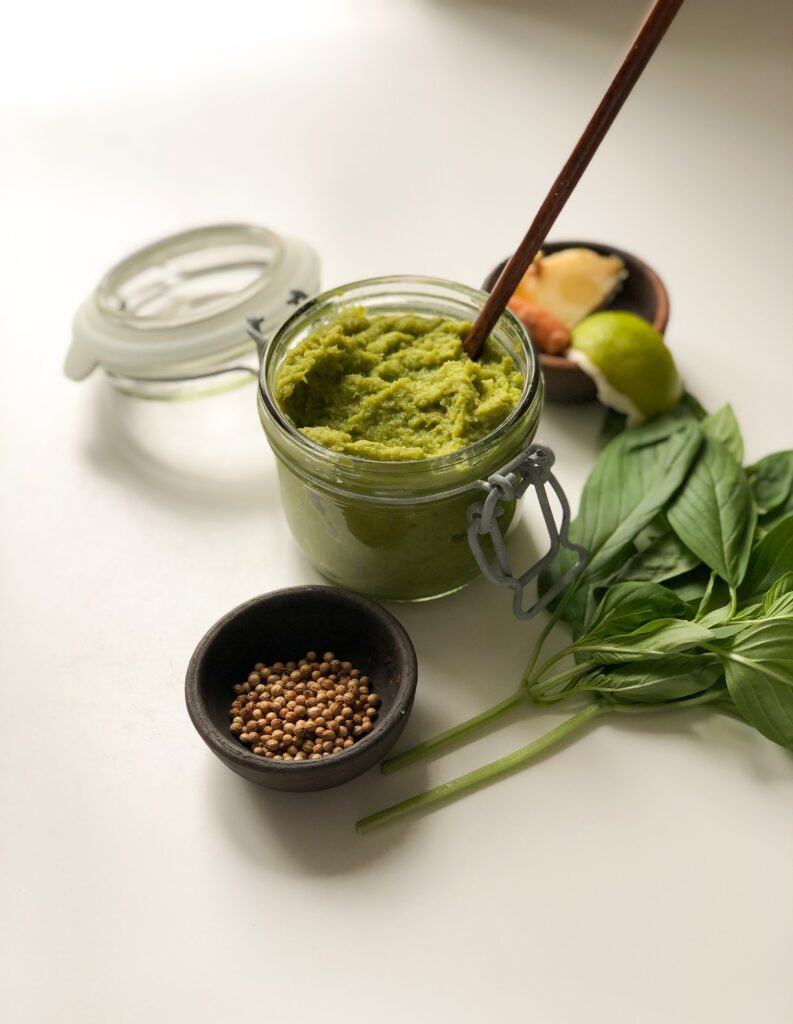
This delightful and vibrant vegan Thai Green Curry Paste is like a burst of happiness in a jar. It’s a magical blend of fresh herbs, aromatic spices, and zesty flavours that come together to create a culinary masterpiece that is Salt free and Sugar free. Thai Green Curry is my favourite Thai dish. After 3 weeks in Thailand including a cooking class and many attempts at making the best curry paste, this is my vegan version of a traditional Thai Green curry paste. If you make this homemade paste I promise you will never buy a store bought Curry paste again.
- Prep 25 mins
- Blend 2-5 mins
- Total 27-30 mins
- Makes 6-8 portions

Ingredients
1 tsp of Cumin seeds, dry roasted
1 tsp of Coriander seeds, dry roasted
1/2 tsp of white Peppercorns, dry roasted
5-10 Thai green Chillies aka bird’s eye chillies (see notes)
8 cloves of Garlic
3 small Shallots
4-5 cm piece of Galangal (see notes)
1 cm piece of fresh Turmeric (optional)
6 Coriander roots or a hand full of Coriander stalks
1/2 Kaffir Lime zest or the zest of 1 Lime
15 Thai Basil leaves
4 stalks of Lemongrass
1 Tbsp of Miso paste
1 dried Shiitake Mushroom, grated
About this recipe
I love Asian food in general but Thai food is definitely my favourite. I’ve done my own Curry paste at home for many years now and tried many different recipes and variations that use different ingredients. A few months ago we spent 3 wonderful weeks in Thailand where we immersed ourselves in Thai culture, nature, temples and of course, food. We did a fantastic cooking class with Asia Scenic, I will be forever thankful to Moon for her kindness and willingness to pass over her passion and knowledge of Thai home cooking. It was such a eye opener getting to try all the ingredients beforehand to understand their place and why their flavours are so important. It really made me change the way I cook and especially the way I cook Thai food. Thai food has many variations: we never had the same Green Curry dish in the 3 weeks we were there. It changes according to the region but also every family has there own take on it. This recipe is my Vegan version of a traditional Thai Green curry paste. I never been this excited to share a recipe with you. It may have a long list of ingredients but it does come together very easily and quickly. You need some planning though as some of the most important ingredients are only available in Thai supermarkets but I promise it is worth it. You will never buy green Curry paste ever again. You can freeze the paste and create a quick weeknight meal in no time that’s super delicious.
Instructions
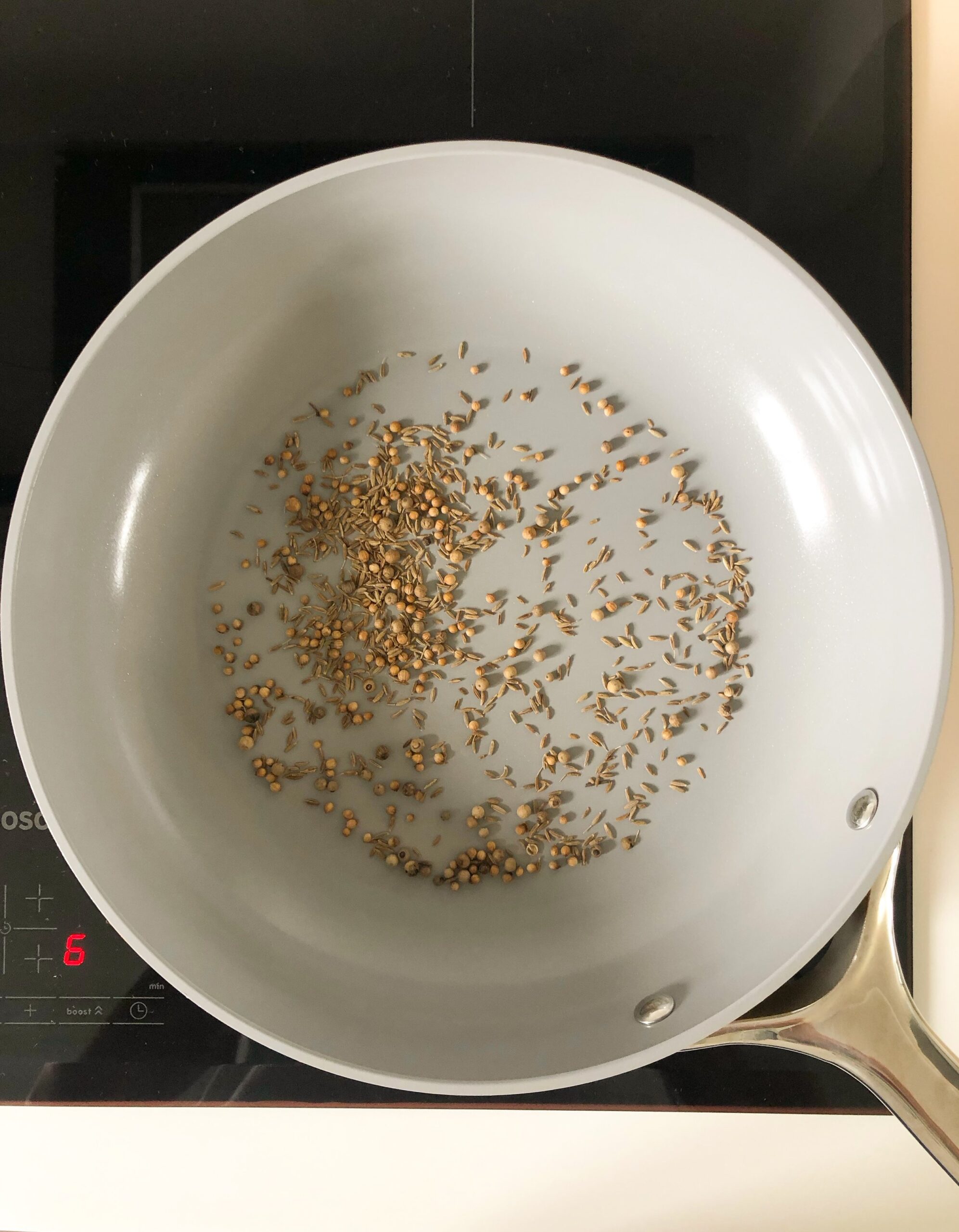
Step 1 – Start by roasting the seeds. Heat a frying pan over medium heat. Once warm, add the Coriander seeds, Cumin seeds, and white Peppercorns Toast for a few minutes or until fragrant. Transfer to a bowl to stop cooking and cool down.
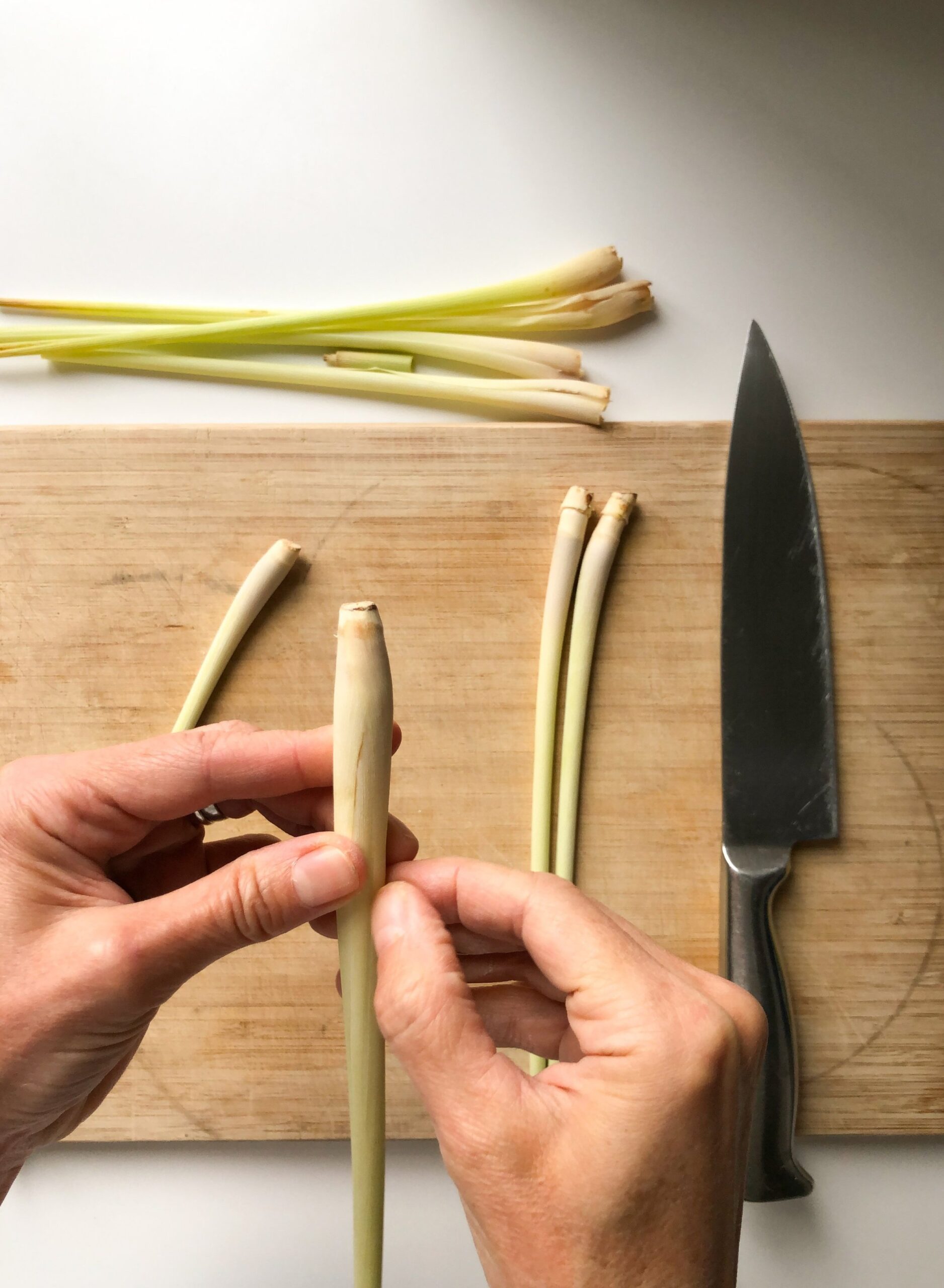
Step 2 – While the spices are cooling, start prepping the Lemongrass by peeling away several layers of the papery outside until you reach the tender inner white core then slice off the top green stalks and tough bottom nubs. Chop the Lemongrass into small bits. You can use the discarded parts to make a Lemongrass tea that is fragrant and delicious.
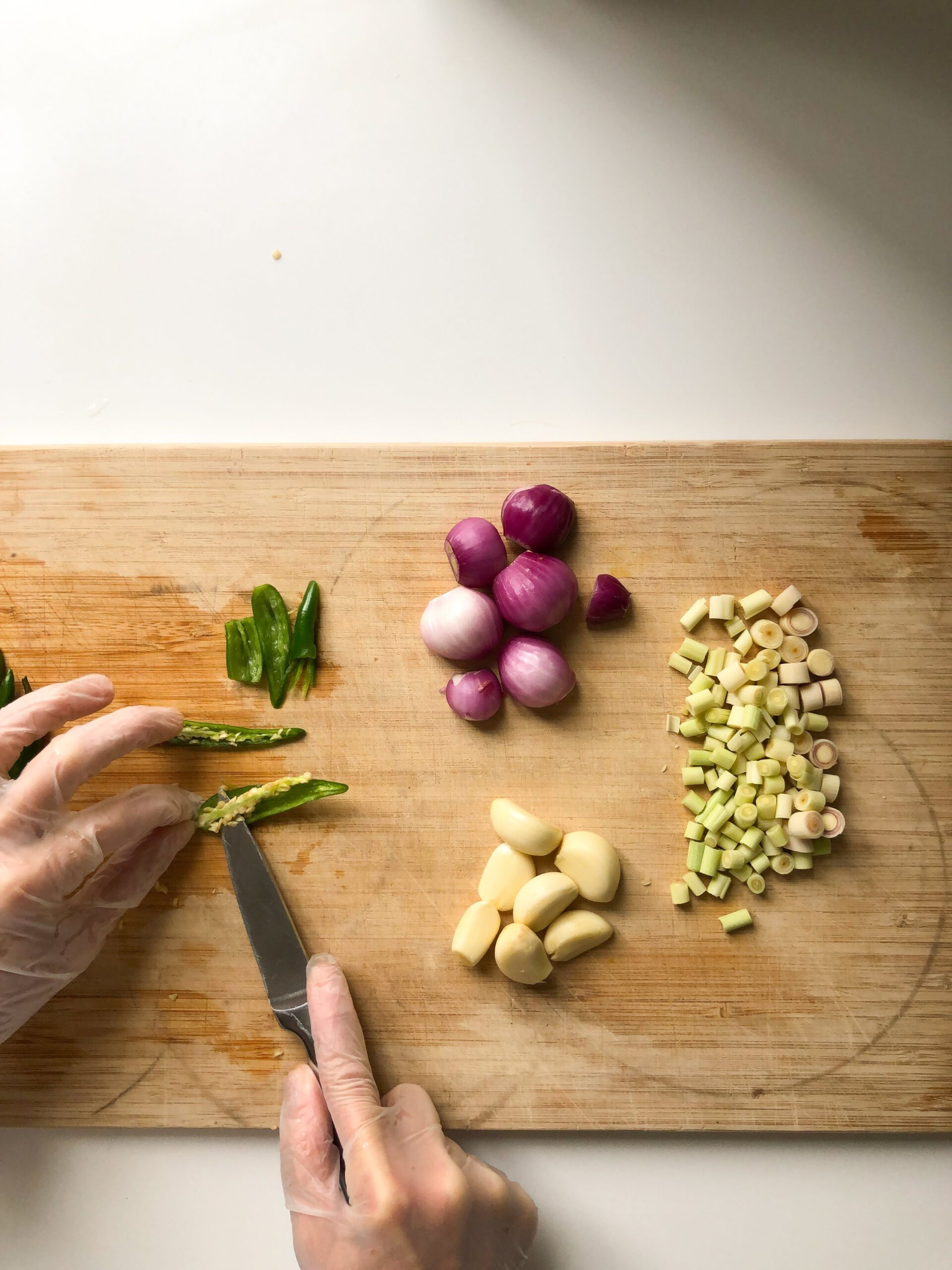
Step 3 – Peel the Shallots and Garlic cloves. Prepare the green Chillies by removing the tops then cut them in half lengthwise and remove the seeds and membranes if you want a milder heat. I love spicy food but some chillies don’t agree with my skin so I’m using gloves.
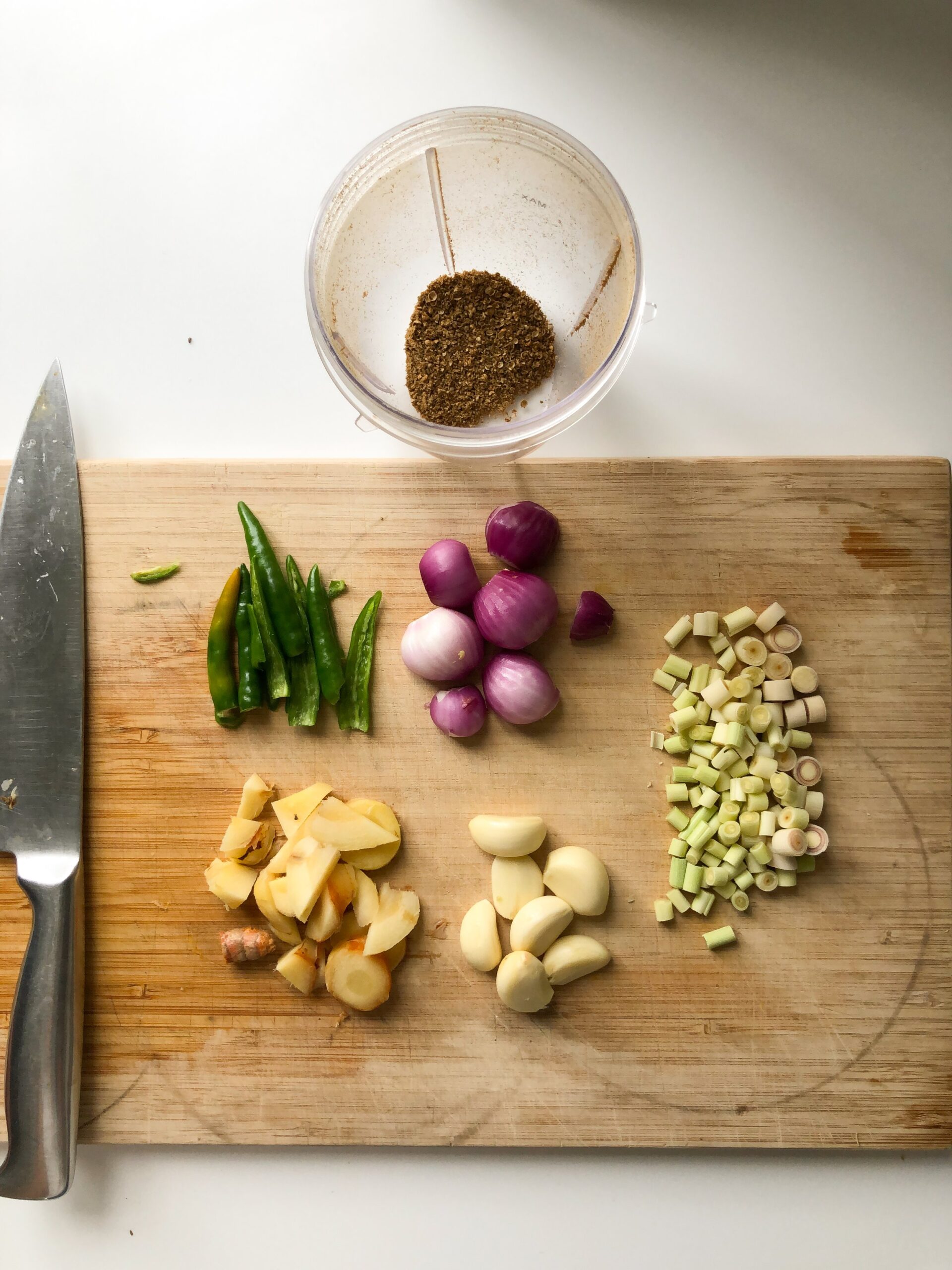
Step 4 – Cut the Galangal and Turmeric. Wash and prepare the Thai Basil leaves and Coriander roots. Grind the roasted seeds first before starting to add your aromatics and herbs to a blender.

Step 5 – Add the Shallots, Chillies, Galangal, Turmeric, Garlic, Lemongrass, Coriander roots, Thai basil and Miso paste to a blender with the ground seeds.

Step 6 – Grate the dried shiitake mushroom and zest the lime. Add the juice of half a lime and blend everything to a smooth paste.

Step 7 – I’m using a high speed blender because it gives the paste a smooth texture in a few seconds. You may need to add a splash of water to help the blades. If using a food processor it will take several rounds blending. Use a spatula to scrape everything down a few times. Repeat until smooth.
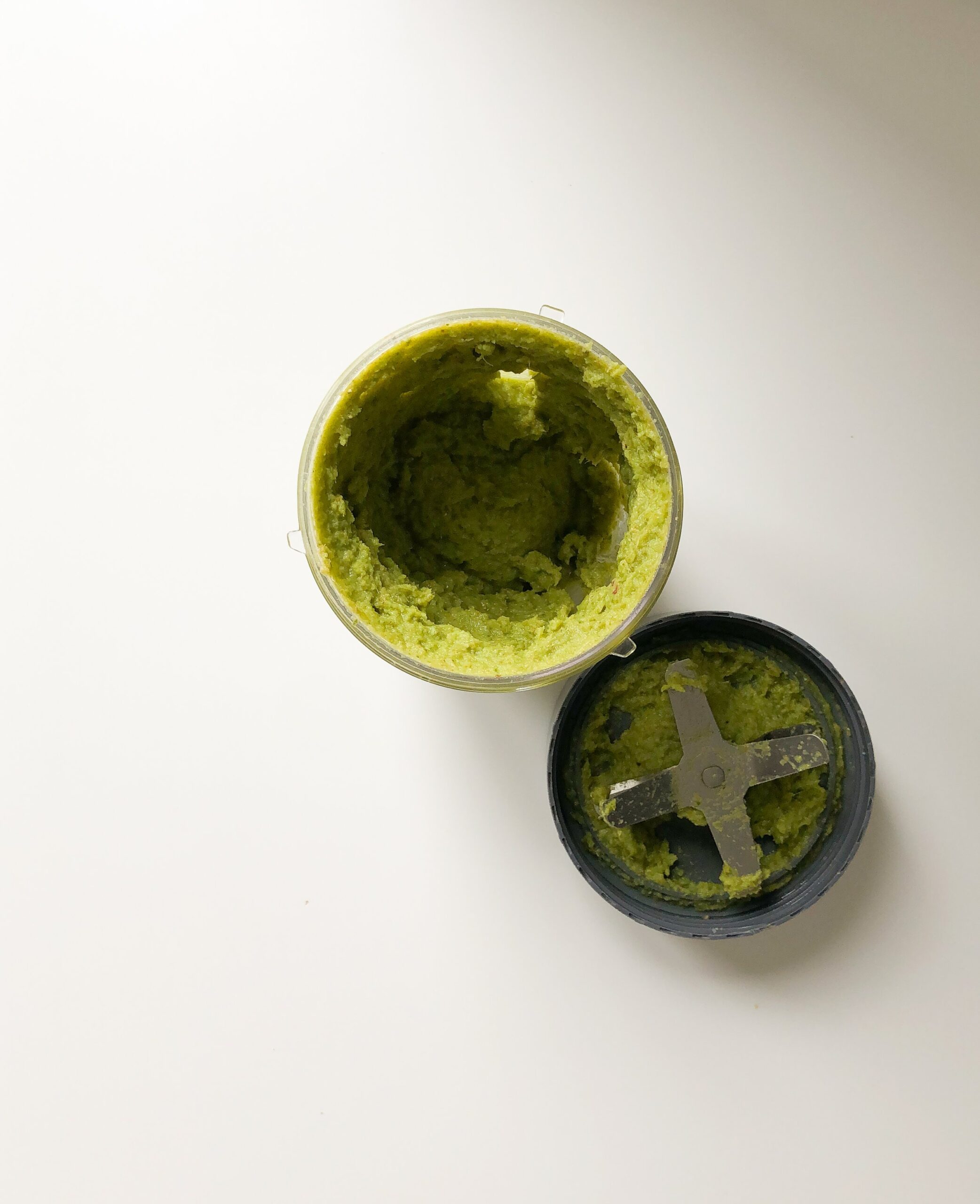
Step 8 – Instead of a blender you can get an even better result with a pestle and mortar, though you will need to slice the Galangal and Lemongrass very thinly and pound for at least 30 mins. I don’t know why but it tastes better. I still do it on special occasions but most of the time I use a blender.
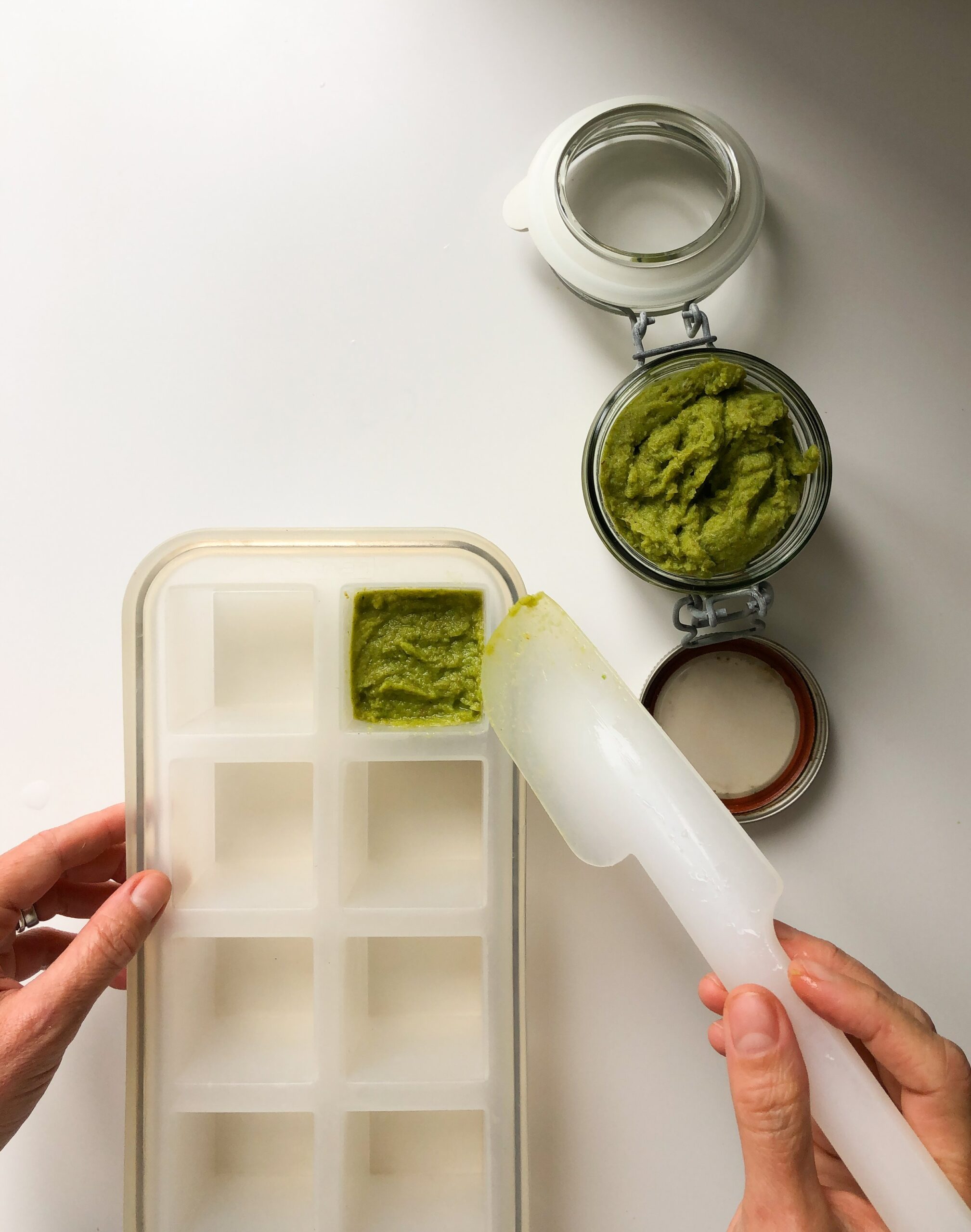
Step 9 – Transfer to a jar and keep in the fridge for up to 1 week or use a silicone ice cube tray to freeze. You can add as much or as little curry paste to each slot as you like, I add enough to make green curry for 2. This paste recipe will do for 6-8 people or 3 meals for 2.
About the Ingredients
Cumin seeds, Coriander seeds and white Peppercorns: You can use ground spices but you will get more flavour by using the whole seed. Dry roast them for a few minutes or until fragrant then let them cool down and grind them in a food processor or coffee/spice grinder.
5-10 Thai green Chillies: These gorgeous green chilies lend their vibrant colour and a touch of spiciness to the paste. These little powerhouses of flavour are like joyful fireworks dancing on your taste buds! I normally use 6-7 chillies but you can adjust according to your taste. I like to deseed and remove the membranes of 5 of the chillies for a milder spice and leave 2 whole.
Galangal: Many recipes will say you can substitute with ginger and I did for many years when recipes called for Galangal. Ginger has a warm, slightly spicy, and zesty flavour with a hint of sweetness. Galangal, on the other hand, has a more complex and distinct flavour. It is earthy, citrusy, and peppery with a hint of pine or floral notes. Galangal is stronger and more pungent compared to ginger and enhances the authenticity of this dish. So yes, you can substitute with Ginger but it will have a different taste. Still good but less authentic.
Turmeric: I’m using fresh Turmeric here but if you don’t have it just omit. Fresh turmeric isn’t always use in traditional Thai green curry paste. I’m using it as this was the way I learned in Thailand. Fresh turmeric also brings a range of health benefits. It is known for its anti-inflammatory properties and is believed to support digestion, boost immunity, and promote overall well-being.
Coriander roots or stalks: Coriander roots are harder to find in UK unless you have your own garden or grown them in pots. Coriander roots have a more intense and concentrated flavour compared to the stalks. They possess a unique combination of earthiness, citrusy notes, and a hint of sweetness. Coriander roots contribute to the robust and aromatic flavour of Thai dishes. On the other hand, Coriander stalks have a milder flavour and have a more fresh, herbaceous taste. If you use the stalks you need to double it to get a similar after taste.
Kaffir Lime: I only find this wrinkled, bumpy and uneven dark green fruit in Thai supermarkets or specialist stores. You can substitute with normal Limes but your paste will not have the same zing. Kaffir Limes have a distinct and aromatic flavour that sets them apart from regular limes. In contrast, regular limes have a more balanced flavour profile and offer a refreshing acidity with a slightly sweet and sour taste.
Thai Basil leaves: Thai Basil is a key ingredient in Thai cuisine. It infuses dishes with its unique character and fills your senses with its distinct aroma. It’s a combination of sweet Basil, Mint, and a hint of Licorice, which creates a captivating and invigorating scent. The moment you catch a whiff you can’t help but feel a sense of excitement and anticipation. If you can’t find Thai Basil you can use sweet Basil instead but use half of the amount.
Lemongrass: Lemongrass is the star of this curry. You can’t make green Curry paste without it. And yes, I’m using 4 stalks of Lemongrass so do not be tempted to use less. The taste of lemongrass is a harmonious blend of citrusy brightness with a subtle herbal undertone. It brings a tangy and zesty flavour reminiscent of lemon but with a distinct and more complex character. Lemongrass is also known for its potential health benefits. It is believed to have antioxidant, anti-inflammatory, and antimicrobial properties, making it a cherished herb in traditional medicine practices.
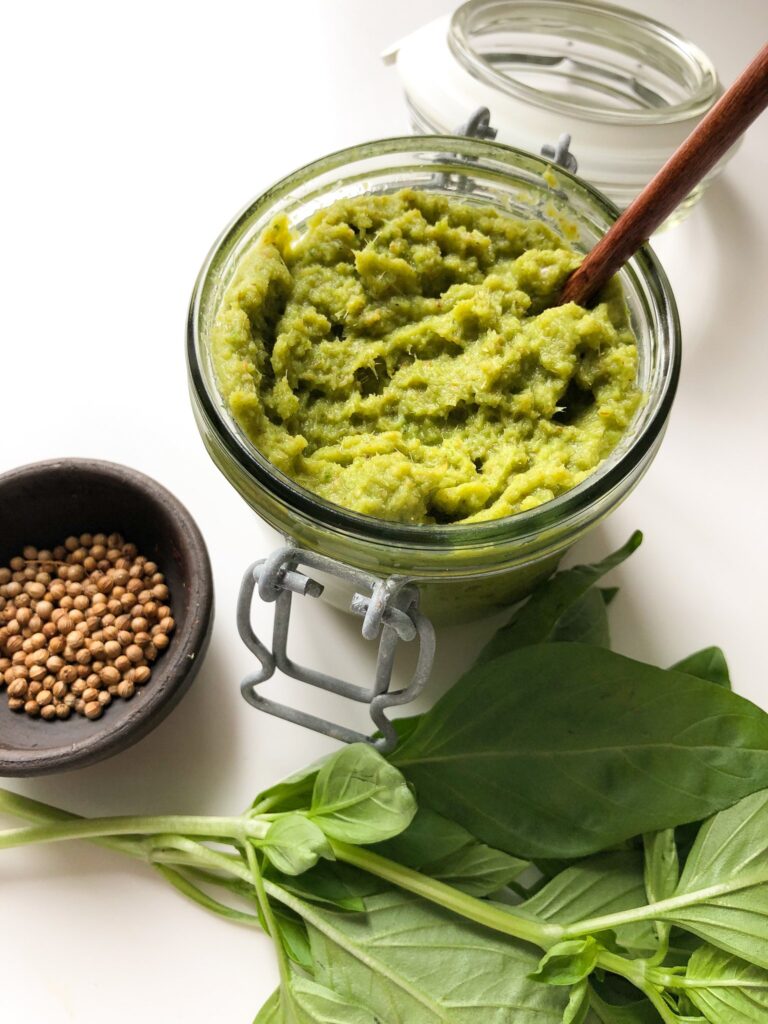
Miso Paste and dry Shiitake Mushroom: Traditional Thai green paste is made with shrimp but in this vegan version we are using dried Shiitake Mushroom and Miso paste. These offer a balance of umami, saltiness, and slight sweetness and will add depth and richness to the paste. You will not miss the shrimp, I promise.
